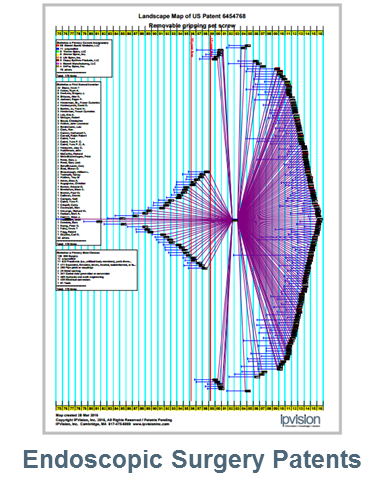Much of the talk about the U.S. patent system generates a lot of heat, but little light. We hear complaints about how the system doesn't work and varied suggestions for fixing it. However, it's not really broken. It serves its original purpose of granting exclusive rights to inventors for a set period of time in exchange for disclosure of the invention's secret sauce (i.e. - disclosure to spur innovation).
The problem is that society is not getting the benefit of this bargain. Part of that is due to the very technical descriptions found in patents today. They are dense and complex; it often takes a legal team and technical experts to make sense of them. It's no wonder that patents aren't sources of inspiration for innovation.
Big Data and Data Visualization. We need a way to better understand that "secret sauce" to make patents more approachable. Fortunately, methods now exist using big data and data visualization to cut through the jargon and provide patent mapping to show the relationship between patents. Improving the visibility of the technology landscape and illuminating connections between industries allows inventors to build on existing inventions and find new uses in different areas.
A good example is from a few years back when I was working with an MIT Sloan Fellow in the oil services industry who was looking at new technology for drilling. As we used some of those big data and data visualization techniques to examine drilling patents, our patent map led us to medical devices. A light bulb went off as we saw the similarity between an oil engineer's need to manipulate a drill in the ground and a surgeon's need to manipulate a tool within the body. It's an entirely different environment, but the two industries can learn from each other - and even be inspired by each other's innovations. This is what the patent system was supposed to enable. By clearly showing us examples of innovations in one area, it can lead to advances in another.
Better Patent Quality. In addition to increasing the visibility and accessibility of patents, we also need to improve the patent application/grant process. There are too many patents out there that, simply put, are lousy. They shouldn't have been granted in the first place. For instance, a company actually patented the CD after it had already existed for several years. However, it takes time and effort to throw those patents out.
While we've seen some changes with appeals in the patent office, a better solution would be to improve patent quality so that only worthy patents are issued. A challenge is that inventors are free to use any wording to describe their inventions. As a result, traditional "key word" searching does not always find the "prior art" that may be relevant to determining whether the invention being claimed is really "novel" and eligible to be patented. This is particularly true in emerging technology areas where the technology "lexicon" hasn't developed yet. For example, the phrase "software bug" traces its ancestry to the moth that crashed an early computer by getting stuck in one of the computer's electromechanical relays. Fortunately, data analytics and visualization can help identify prior art that is missed by keyword searching, thereby improving patent quality and providing better visibility that can spawn innovation.
Long Technology Commercialization Cycles. Another source of "heat" with the patent system is that many patented inventions never make it to the market. Some reform proposals would require inventors to lose their patent rights when this happens. However, most inventions are evolutionary and not revolutionary. They are incremental improvements on existing technology like pieces of a mobile network or advances for a smart phone. When those types of inventions aren't exploited, it's often because it's too technologically difficult or too expensive at the time. But just because the invention doesn't get to market doesn't mean that it isn't worthy of patent protection. (This is where "patent trolls" and aggregators often come into play, but that's another story.)
As for truly revolutionary innovations, they often take decades to get to market. For example, 3D printing has taken more than 30 years. And that Siri in your iPhone is a descendant of speech recognition software and natural language processing work that began back in the 1970s. The patents on components of truly revolutionary technology often expire before any products derived from them make it to the market. Such inventors rarely see any economic return - an argument for longer patent terms perhaps? Those who criticize inventors for not bringing their inventions to market show a lack of understanding for how we get ground-breaking technology to ultimately benefit society.
We Need to Get the Benefits of the Patent Bargain. The real problem with the current patent system is that we're missing opportunities. We need to improve the visibility of patents and the patent-granting process so that it can lead to (and protect) great innovation for the good of society. We also need to be patient and understand that revolutionary technology often takes longer than the life of a patent to bring to market - and not all evolutionary technology will even get to the market. The system isn't broken; it just needs more light in order for society to reap the innovation benefits of the "patent bargain" that our founding fathers envisioned.
Joe Hadzima is a senior lecturer at MIT Sloan School of Management and has been involved in creating more than 100 new business ventures in areas such as speech recognition, advanced materials, nanotechnology, networking and life sciences. He is a co-founder of IPVision, Inc. an intellectual property strategy, patent mapping and analytics company.

